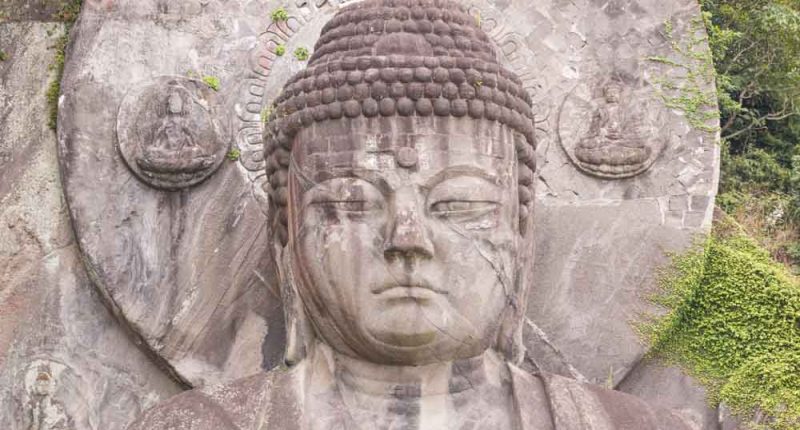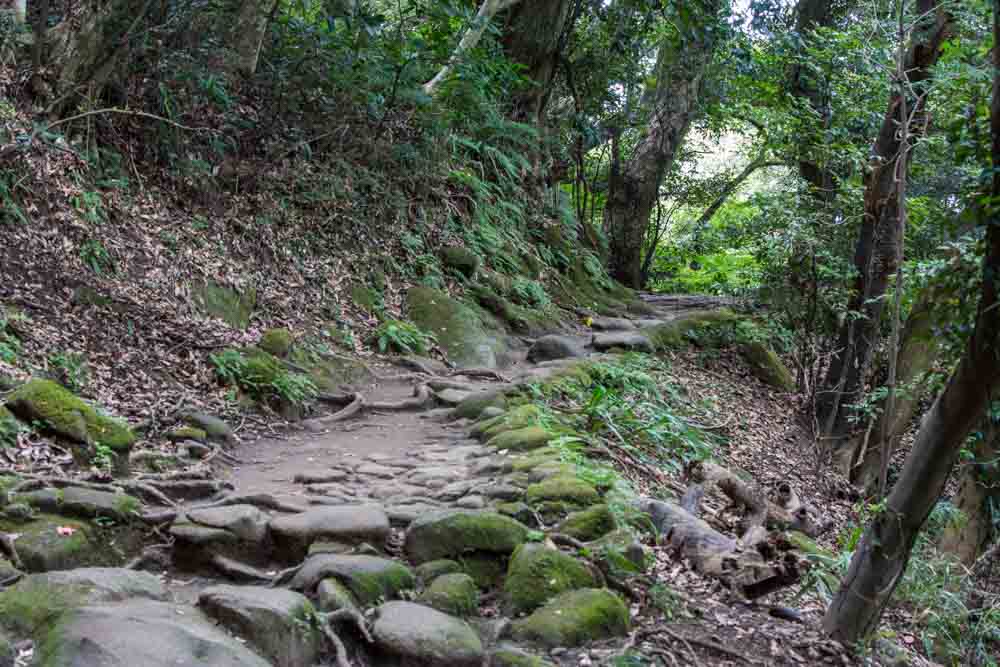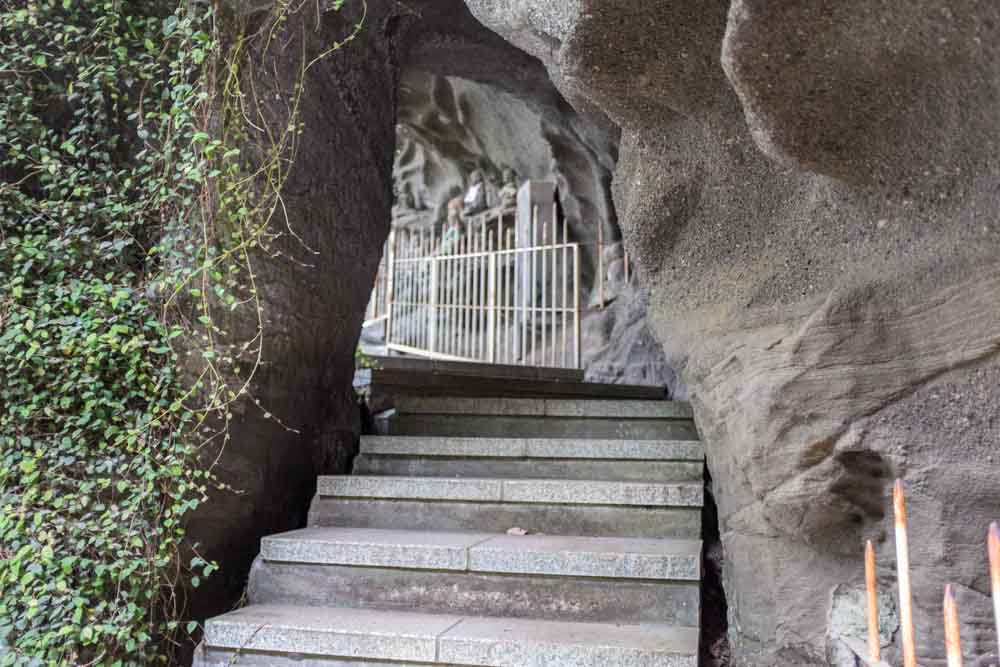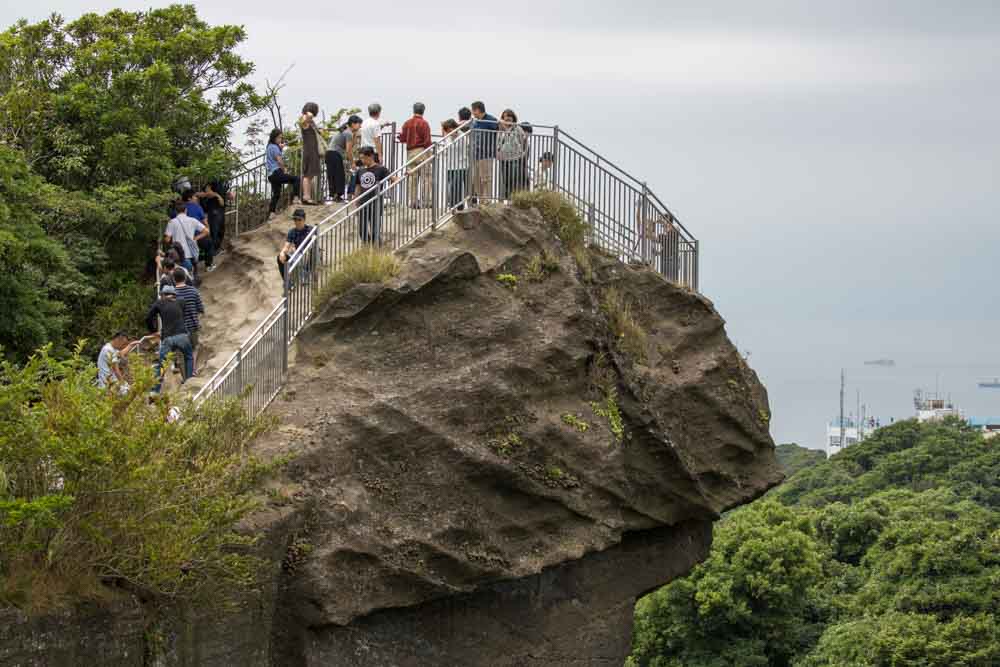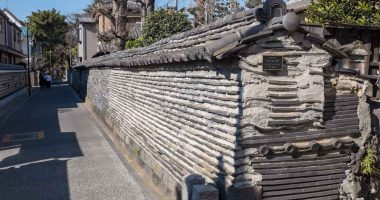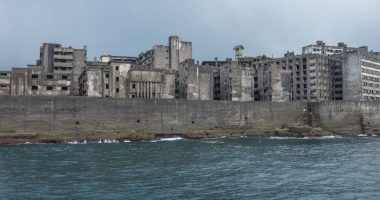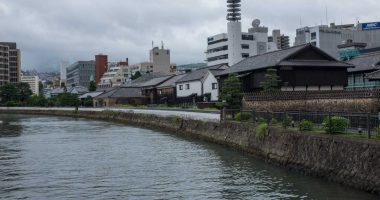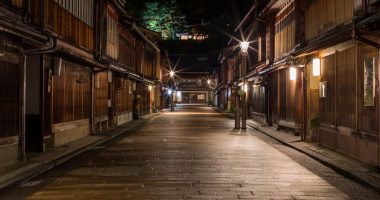Mount Nokogiri (鋸山) is a low mountain on the west side of Chiba’s Boso Peninsula. It was the site of heavy quarrying during the Edo period which left it with a uniquely jagged profile and gave the mountain its name (nokogiri means “saw” hence it is also known as “Sawtooth Mountain” in English). The stone quarried is called houshuishi (房州石)—a high quality stone that is easy to cut and was put to use, among other places, in the formation of the fortresses of Tokyo Bay that would later become today’s Odaiba.
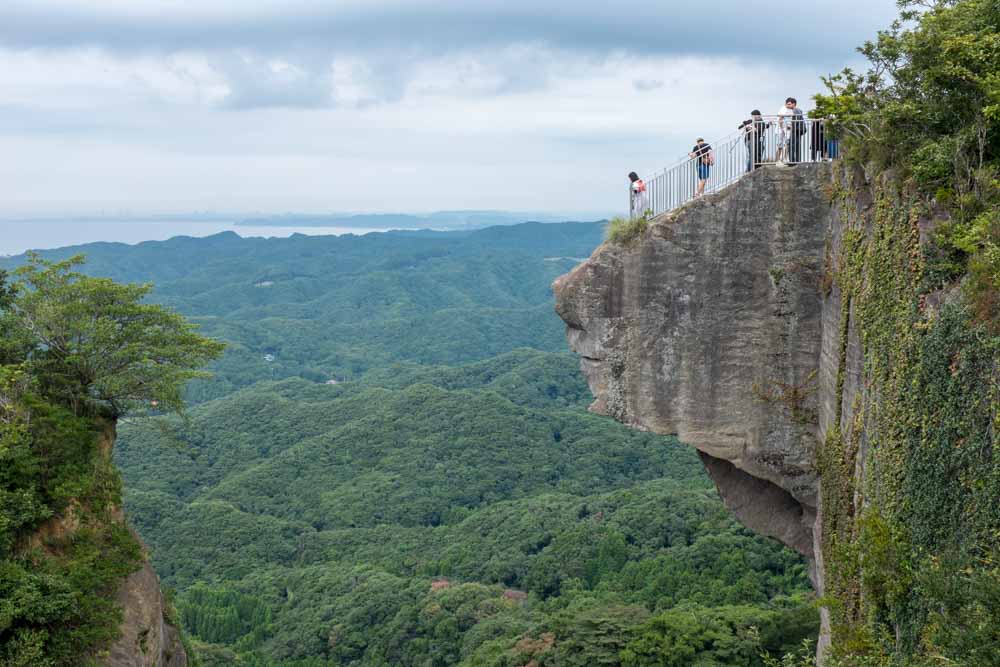
The mountain temple, Nihon-ji, has a history dating back 1,300 years when it was founded by imperial decree under Emperor Shomuu and Empress Gyoki, but today it is most famous as the site of Japan’s largest stone-carved Buddha (daibutsu), a mammoth statue completed in 1783 that stands at just over 31 meters and gazes out onto the ocean to the west. Earthquakes the passing of time tool their toll on the structure, and major renovation works were carried out in 1966.
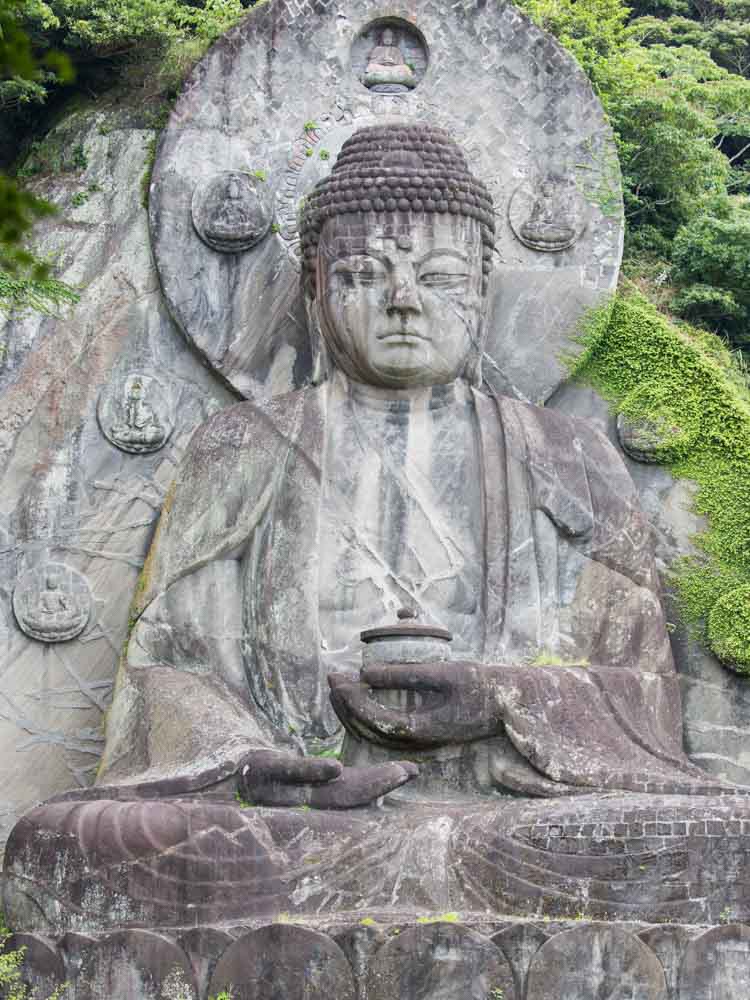
But while the daibutsu is no doubt the most imposing statue, the mountain slopes are mottled with miniature stone carvings of disciples of the Buddha, referred to as the 1,500 stone Tokai Arhats. These statues are hidden in grottoes, caves, and coves carved into the mountain face, and they come in all different shapes and forms. Today, only about 500 still remain as many were destroyed in the early Meiji era which witnessed a promotion of Shinto, Japan’s indigenous, religion at the expense of Buddhism. Those that do remain are on the whole well preserved or missing only a fragment of their original form, carved by the same sculptor Jingoro Eirei Ono and his 27 apprentices who created the daibutsu.
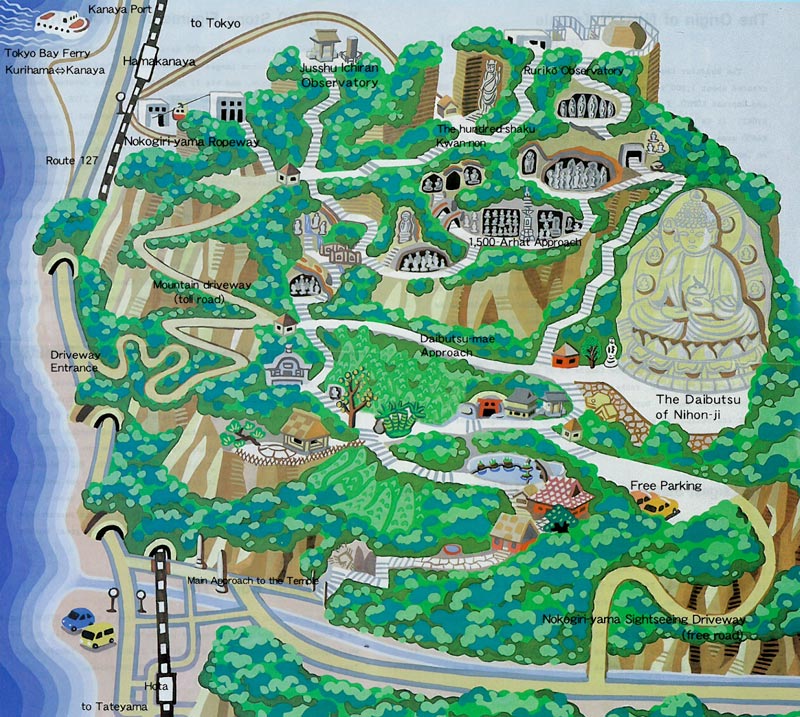
The other attraction is a viewing platform called jigoku nozoki (“Peek into Hell”) at the top of the mountain—a rock that juts out from the mountain face, hanging a hundred meters or so above the ground. Visitors queue to have their photograph taken at the edge (which is surrounded by iron fencing), but the views from anywhere on the top of the mountain are spectacular. To the west you have the ocean flowing into Tokyo Bay (on a very clear day you may also be able to catch a glimpse of a distant Mount Fuji), and elsewhere you have a panorama of the verdant green of the inland area of the Boso Peninsula with the Futtsu-Tateyama highway cutting through the landscape.
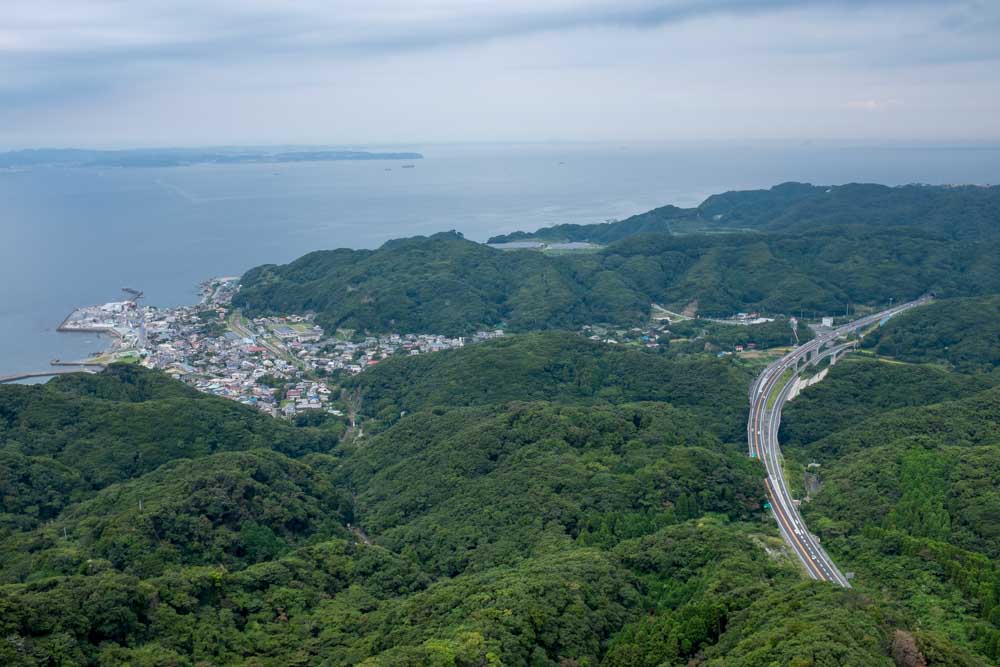
There are numerous ways to get up and down the mountain, each route taking you past different areas and points of interest. While by no means a tall mountain at 330 meters, the paths go up and down making the journey harder on the legs. There is a ropeway that runs from the nearby town and takes you a distance of 680 meters to the top of the mountain (¥500 one way, ¥930 return; about half price for children), as well as a dedicated mountain toll road that ends at the same place (cars only; motorbikes and bicycles are not allowed). Note that the hours of operation for the ropeway are 9:00-17:00 from 16 February to 15 November, and until 4pm during the winter months. Separately, a ¥600 fee is requested to climb the mountain (you will also get an English pamphlet with a map and some explanations).
Incidentally, apart from a few vending machines there are no places to buy food or drink so you’re advised to take your own supplies. I read mention of a restaurant near the viewing deck, but I saw no trace of any such establishment when I climbed up.
